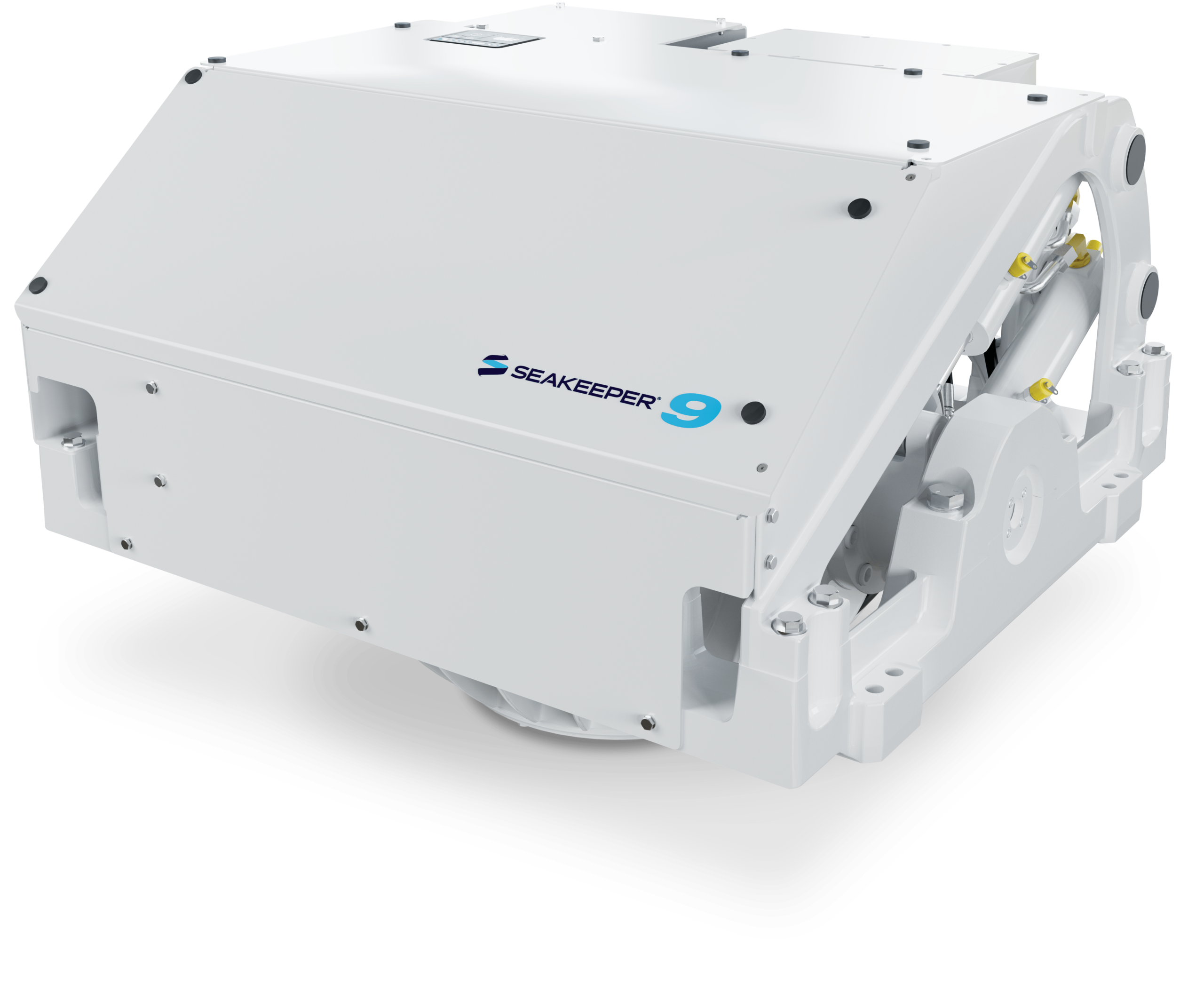Seakeeper 9 Operation Manual (90223-10); S/N 9-233-4900 to 9-243-5379
7.0 Specifications and Summary
All Seakeeper 9 specifications can be viewed here (Seakeeper.com).

Arrangement
The Seakeeper 9 consists of the Flywheel, Enclosure, Foundation, Electronics, Brake, Cooling, and Cover Subsystems.
Installation Location
The Seakeeper is a torque device and does not have to be installed in a specific hull location or on the centerline. However, the Seakeeper should not be installed forward of the longitudinal center of gravity to minimize high acceleration loading due to hull/wave impacts during operation at high speed or in large waves.
Mounting Dimensions
See Drawing No. 90225 – Seakeeper 9/7HD Bolt-In Installation Details.
See Drawing No. 90226 – Seakeeper 9/7HD Bond-In Installation Details.
Loads
The installer is responsible for designing the foundation to which the Seakeeper is attached and for ensuring that this foundation can safely transfer the concentrated Seakeeper loads from the frame to the adjacent hull structure. Loads that the Seakeeper imposes on the hull structure are explained in Drawing No. 90225 – Seakeeper 9/7HD Bolt-In Installation Details and Drawing No. 90226 – Seakeeper 9/7HD Bond-In Installation Details; these loads do NOT include vessel motion accelerations, such as vertical slam loads which can be high for higher speed vessels.
Cooling
The Seakeeper bearings, Motor Drive Box, and hydraulic manifold are cooled by a closed water / glycol mix cooling loop incorporating a seawater heat exchanger. The installer is responsible for providing 4 – 8 GPM (15.1 – 30.3 LPM) raw water at ambient sea temperature and a maximum pressure of 20 psi (1.4 bar) to the heat exchanger.
Electrical
The installer supplies 208-230 VAC, 50/60 Hz, single-phase power on a 20 A service to the Motor Drive Box. The installer is also responsible for providing 24 VDC at 10 A service to the Seakeeper Control System and 24 VDC at 10 A for the DC Seawater Pump. Separate circuit breakers should be used for each Motor Drive Box in multiple Seakeeper installations. Similarly, separate circuit breakers should be used for each Seakeeper Control System and Seawater Pump in multiple Seakeeper installations.
Operator Controls
A compatible MFD or Seakeeper 5″ Touch Display starts, operates, monitors, and shuts down the Seakeeper remotely. The ConnectBox user interface allows Seakeeper to operate locally but cannot change settings or acknowledge alarms, as the MFD app or Seakeeper display does.
Performance
Reduction of boat roll is a function of the boat’s displacement, transverse metacentric height (GMT) and hull damping as well as the operating conditions (speed and heading with respect to waves) and sea state. The Seakeeper controller regulates the active hydraulic brake to ensure the Seakeeper’s anti-roll torque is maximized regardless of hull characteristics or operating conditions.
Alarm and Monitoring
Sensors, alarms and shutdowns are provided to allow unattended operation. Sensors measure Seakeeper and drive temperatures, gimbal angle, brake pressure, and ship motion. The Seakeeper controller sends sensor values and alarm information to the display and also locks the brake and shuts down the motor drive in the event of an alarm condition. Seakeeper operating history during faults or alarms is recorded in the controller’s memory for subsequent recall if service is needed. Seakeeper may access the Seakeeper’s software to gather run hours, bearing loading, and hull slamming information.
Safety
The brake automatically locks the Seakeeper so it cannot generate excessive anti-rolling torque loads in case of a system fault or alarm, loss of electrical power, or brake pressure. The brake can be locked remotely from the MFD app or 5″ Display by shutting off AC and DC power at the supply breakers or locally at the ConnectBox user interface.